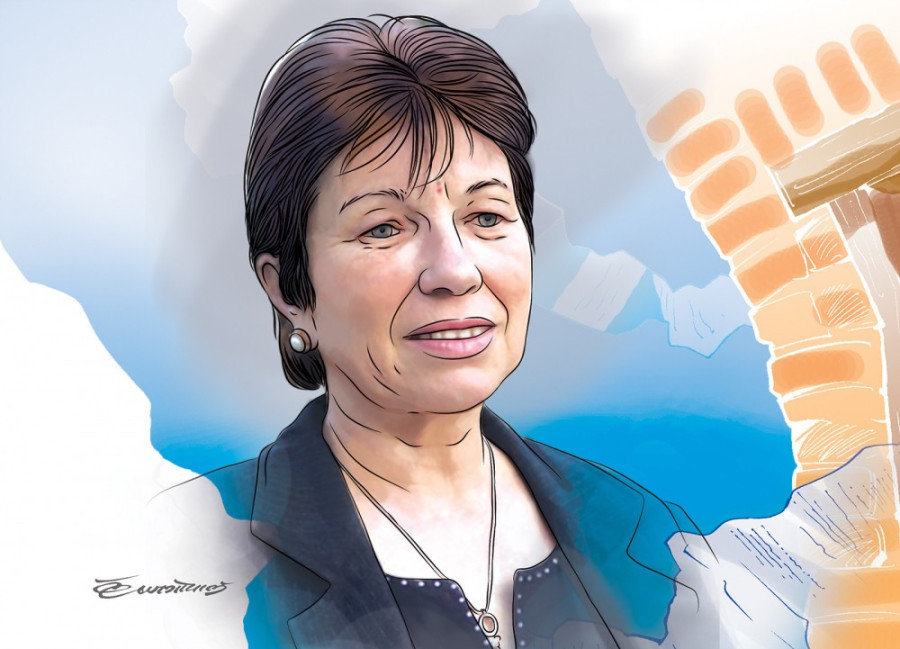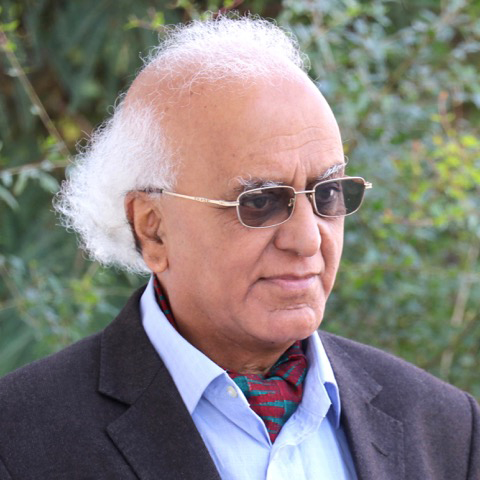Columns
Greta Rana’s writing and history
Walking into the family of the Ranas, Greta walked into the unknown realms of Rana history.
Abhi Subedi
A theatre artist called me on January 5 to say that Greta Rana had just passed away. Born in Yorkshire, United Kingdom in 1943, Greta is established as a Nepali novelist and poet in English. The theatre artist’s call says Greta was also a theatre director and performer. Her image of a poet is very strong in my mind. But how Greta met an alien history is something that presents us with surprise and admiration. English and French writers and anthropologists came to Nepal at different times, and described this country from various perspectives. Some of their interpretations of Nepal, its culture, arts and society are striking, even though some of them may sound like exoticisation as explained by Edward Said in Orientalism. But others have made meticulous studies of Nepal’s culture, arts, anthropology and geography. They are those whose studies are objective, distant and disinterested.
It is rare to find creative individuals who come and face history, either from within or outside, with passion. But Greta, a young British woman married to a Rana student and friend whom she met in Britain came without any preparation to directly encounter the feudal history of this land. Madhukar Shumsher Rana, the progeny of Rana prime minister Juddha Shumsher Rana, brought her into his ancestral house in Jawalakhel as a bride. By walking into the family of the Ranas, Greta walked into the unknown realms of Rana history.
Loudness and silence
The history was a melange of loudness and silence, a mixture of the aristocratic bravados of those in power and the quiet styles of those who lived on the fringe even within the palatial premises. Greta always knew that she had come to live in this land. But she confessed to me she did not have any idea then what life here would be like for her and what pattern of it she would have to choose. But being very creative and intelligent, finding a way would not have been difficult for Greta. The Rana household greeted her with a package of history. That package did not contain the history of the family with all the facts and figures. Instead, it contained a fictionalised history that was given to her to handle. The founder of the family rule in Nepal, Jung Bahadur Rana, was the most prominent character, the protagonist of that fictionalised history. Greta said her father-in-law asked her to translate Seto Bagh, a Nepali historical fiction written by an ex-army man, Diamond Shumsher Rana, of the same clan.
Greta did not have much choice as her father-in-law had already declared it. How Greta learned the Nepali language in a short time is a very remarkable subject. Diamond Shumsher Rana had written the novel based on the stories he had heard from his childhood. He took pride in that and considered that as proof of the authenticity of the history. Historian Chittaranjan Nepali did not agree with the authenticity of the history presented in this novel; literary critics did not fully accept Seto Bagh as a literary fictional work. Seto Bagh thus became a twilight zone of Nepal’s literature and history. This novel covers the history of the last days of Jung Bahadur Rana and the life of his eldest son Jagat Jung Rana. The story covers a period spanning Jung’s ruling days to some period after his death. Greta says she “had already written three novels and had a great many poems published before she translated Diamond Shumshere’s Seto Bagh”. Though she never “intended to translate anything”, she agreed to translate the novel into English.
Greta began with this fictionalised package of Rana history. I have written earlier, this was a way of facing history. To cite from my earlier essay, “The history of a family that Greta entered after marriage was an ambivalent contact zone for her where she encountered a history that was amorphous and shifting. She translated her way into that space where she created a life pattern. I take it as Greta’s creative methodology and strength.” (Facing history with poetry, The Kathmandu Post, December 14, 2014). I consider Greta Rana’s poetic sensibility and writing as her strength.
Greta often wanted me to read her poetry and make observations about them. She invited me to launch a book of her poems entitled So why not sleep? at a programme organised inside her compound in Jawalakhel on November 29, 2014. I spoke at length about her art, the confessional mode and the power of expression in her poetry. I consider this collection as her major poetic oeuvre in which she has described the places she has visited, and recorded the very important moments of her creative discoveries. In general, Greta has written about herself, her journey from Castleford to Kathmandu in her poetry, and the reality of the families, women’s predicaments and the spectrality of Rana history in her fiction.
Strong impact
Greta Rana invited me to comment on her fiction Hidden Women: The Ruling Women of the Rana Dynasty (2012, 2022) at the same Jawalakhel location. I have written these lines about that: In the epilogue of the second edition of what I call her magnum opus, Greta writes, “Over one-hundred-and-thirty years later, a young foreign woman stepped into the mysterious rest house in Jawalakhel.” She found that the Rana houses, too, had memories. She saw in them the shadows, that “flitted in and out of the walls... she would see out of the corner of her eye shadowy figures walk along the passageway”. (Greta Rana’s loud solitude, The Kathmandu Post, April 10, 2022).
This “young foreign woman” departed by leaving her strong impact here as a novelist, poet and theatre person whose engagements are described by Saguna Saha in her recollections in Kantipur (February 4, 2023). We became very close to Greta’s late husband, economist Madhukar Shumsher Rana, mainly through the association with British Nepali historian John Whelpton whose scholarly works about Jung added a new dimension to the study of the same period. There is no space here to discuss Greta’s odyssey of exploring the Rana dynasty, the hidden women, and other novels. I want to end by paying homage to this successful writer, a great soul and friend.




 7.12°C Kathmandu
7.12°C Kathmandu















